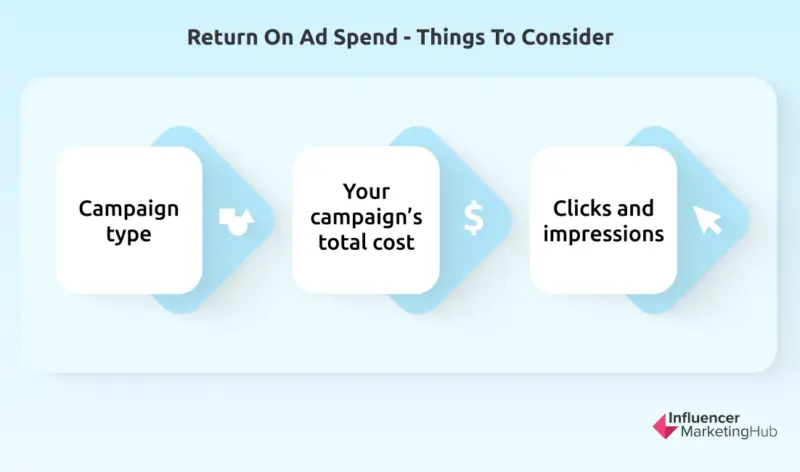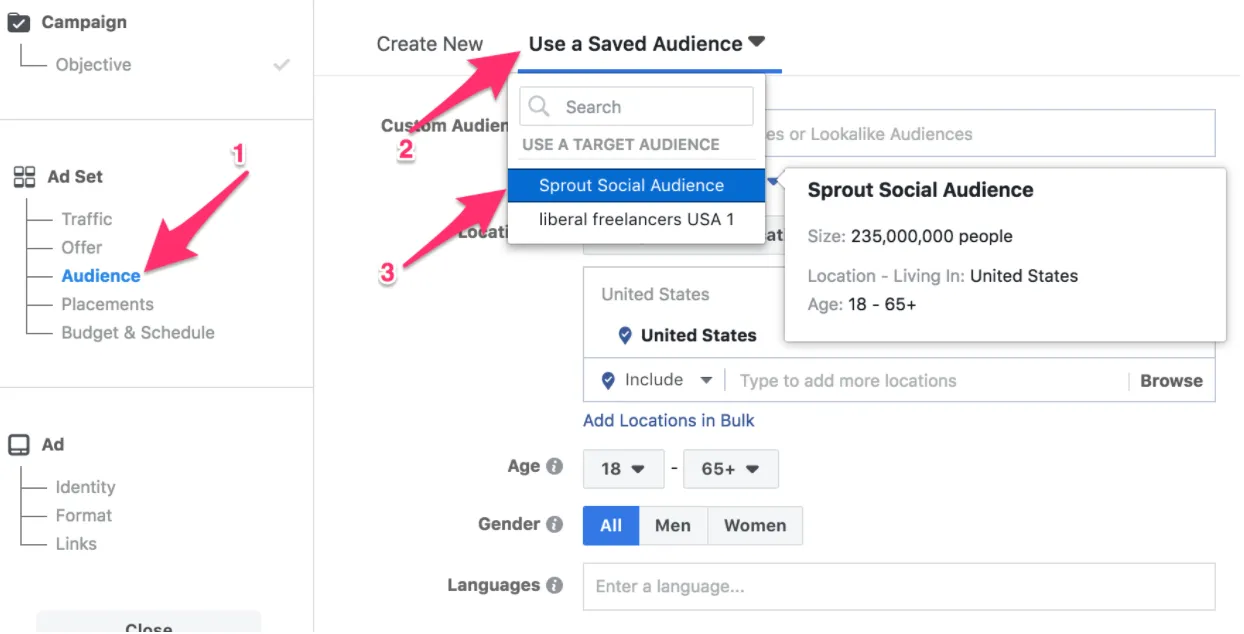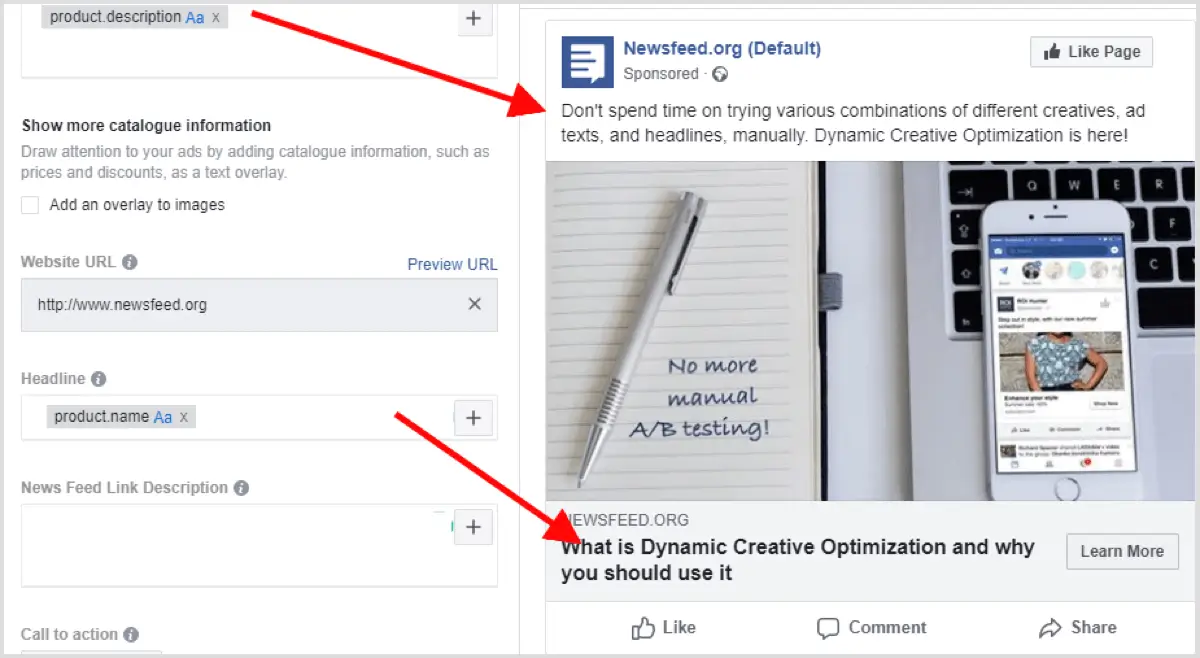With over 2.9 billion monthly active users, Facebook remains one of the most important platforms for reaching target audiences and driving sales.
But simply creating Facebook ads isn't enough - you need a strategy optimized for return on ad spend (ROAS).
Recent studies show that only 12% of marketers believe their Facebook efforts are highly effective, while 44% say they are only slightly or not at all effective (Social Media Today, 2022).
The key is aligning your creative, targeting, bidding and analytics with campaign objectives. For example, dynamic creative optimisation boosts retail ROAS by up to 74%, according to Meta’s independent study.
Focusing on re-engaging past customers also delivers 4-10x higher ROAS compared to new customer targeting (Wordstream). With the right strategy tailored to your business goals, you can expect dramatically higher returns from your Facebook ad investment!
Continue reading as this article will provide proven tactics to maximize your ROAS on Facebook, from compelling ad messaging to optimizing for conversions across the funnel.
What is Facebook Ads ROAS?

Facebook ROAS, or Return on Advertising Spend, is a metric that helps measure the effectiveness of your advertising campaigns on Facebook. Higher ROAS means greater profitability from your ads.
The goal is to achieve the highest ROAS possible from Facebook advertising spend through ongoing optimization and learning from data.
How to calculate Facebook Ads Roas?
Calculating ROAS is pretty straightforward. You divide the revenue generated from your ads by the amount you spent on those ads, and then multiply it by 100 to get a percentage.
For example, if you spent $1,000 on ads and generated $5,000 in revenue, your ROAS would be 500% ([$5,000 / $1,000] * 100).
What is a Good ROAS for Facebook Ads?
Ah, the million-dollar question! While it would be nice to have a universal benchmark for a good ROAS, unfortunately, it's not that simple. The ideal ROAS can vary widely depending on factors like your industry, target audience, advertising objectives, and your profit margins.
Factors to consider when evaluating your ROAS

Instead of fixating on a specific number, focus on these key factors when evaluating your Facebook Ads ROAS:
- Industry benchmarks and competitive analysis
Do some sleuthing and research industry-specific benchmarks for ROAS. This will give you a general idea of what others in your field are achieving.
Keep in mind that different industries have different customer lifetime values and revenue expectations, so take these benchmarks with a pinch of salt.
- Profit margins and business goals
Take your profit margins and business goals into account. A good ROAS is one that aligns with your profitability targets and aligns with your marketing objectives.
For example, if you have high profit margins, you might aim for a higher ROAS.
- Ad campaign objectives
Consider the objective of your ad campaign. Are you looking to drive sales, increase brand awareness, or grow your customer base? The ROAS you aim for will differ accordingly.
A campaign focused on brand awareness might have a lower immediate ROAS but can contribute to long-term growth.
- Customer lifetime value (CLTV)
Factor in the customer's lifetime value. If your product or service has a high CLTV, it might justify a lower initial ROAS, knowing that you can generate more revenue from returning customers in the long run.
- Experiment, iterate, optimize
Ultimately, the definition of a "good" ROAS for your Facebook Ads will be unique to your business. It's important to remember that ROAS is not a static figure but rather a dynamic metric that evolves over time as you experiment, iterate, and optimize your ads to improve their performance.
Proven Strategies to Maximize Facebook ROAS
Given below are the best strategies to maximize Facebook ROAS:
Strategy 1: Audience Targeting

We'll explore how to leverage audience targeting to make the most of your Facebook ROAS. Let's dive right in!
- Importance of understanding your target audience
You wouldn't plan a surprise party without knowing who the birthday person is, right? The same goes for Facebook ads!
- Utilizing demographics, interests, and behaviors for effective targeting
Need to reach young professionals interested in fitness? No problem! Want to target parents of newborns? You got it! Get creative and use these targeting options to hone in on your ideal audience.
- Retargeting strategies
Ever noticed ads following you around on Facebook? That's retargeting in action! By showing your ads to those who have already interacted with your brand, you increase the chances of conversion. Set up custom audiences for retargeting, whether it's people who visited your website or engaged with your previous ads.
Strategy 2: Ad Copy and Creative Optimization

Now that you know who you're targeting, it's time to create ads that grab their attention. Let's explore how to optimize your ad copy and visuals for maximum impact!
- Writing compelling ad copy that resonates with your target audience
Imagine your ad copy is a conversation with your target audience. Speak their language, address their pain points, and show how your product or service can solve their problems.
- Designing eye-catching visuals or videos
Design visuals that stand out and align with your brand. Experiment with different formats, such as carousel ads or slideshows, to showcase multiple products or angles.
- A/B testing different ad variations
To A or to B, that is the question! Testing different ad variations allows you to identify what works best for your audience. Try different headlines, images, calls to action, or even ad formats. Facebook's split testing feature makes it easy to compare and optimize your ads.
Suggested Reading:
Strategy 3: Ad Placement and Bidding
Now that your ads are irresistible, let's discuss where to put them and how to optimize your bidding strategy for maximum ROI. Let the placement and bidding games begin!
- Selecting the right ad placements for your campaign
Facebook offers various ad placements, from the News Feed to Stories and the Audience Network. Each placement has its own strengths and quirks. Experiment and analyze the performance of different placements to determine which ones deliver the best results for your campaign objectives.
- Choosing manual vs. automatic bidding
Manual bidding gives you more control over your ad's cost, while automatic bidding allows Facebook to optimize your bids based on your desired outcome. Consider your budget, campaign goals, and comfort level with relinquishing control.
Strategy 4: Ad Frequency and Timing
Let's uncover the secrets of balancing ad frequency and leveraging real-time events for timely campaigns.
- Balancing ad frequency to avoid ad fatigue
Ever heard the saying, "Too much of a good thing"? The same applies to ads! Bombarding your audience with the same ad can create ad fatigue, leading to a decline in performance. Find the right balance by monitoring the frequency of your ads and keeping them fresh and engaging.
- Understanding the importance of timing in ad delivery
Timing can make or break your ad's effectiveness. Consider when your target audience is most receptive to your message. Are they night owls or early birds? Do they browse Facebook during breaks or after work? Time your ads for maximum impact and catch your audience when they're most likely to engage.
- Scheduling your ads for optimal performance
Don't leave it to chance – set a schedule! Use Facebook's ad scheduling feature to show your ads only during certain hours or days when your target audience is most active. This allows you to focus your budget on peak times and ensure your ads are seen by the right people at the right moments.
- Leveraging real-time events or holidays for timely campaigns
Take advantage of real-time events or holidays by incorporating them into your campaigns. Tap into the buzz surrounding major events, like the Super Bowl or holidays like Black Friday. Create ads that align with the occasion and capture the attention and excitement of your target audience.
Suggested Reading:
The Complete Guide to building a Facebook Chatbot & integrating it with Facebook Ads!
Advanced Tactics to Boost Facebook ROAS
Given below are some tactics to boost Facebook ROAS:
Tactic 1: Implementing Facebook Pixel and Custom Conversions

Imagine having a smart assistant that tracks your Facebook ads' performance, gathers valuable data, and optimizes your campaigns - that's exactly what the Facebook Pixel does! By installing this small piece of code on your website, you can easily track conversions, optimize for specific events, and even create custom audiences.
- Why Facebook Pixel?
Facebook Pixel allows you to track key actions taken by users, such as purchases, sign-ups, or downloads, providing you with essential insights to make informed decisions. With this data, you can refine your targeting, create lookalike audiences, and even retarget users who've interacted with your brand.
- Using Custom Conversions
Take your Facebook Pixel game even further by setting up custom conversions. This nifty feature enables you to track specific events tailored to your business objectives. Want to track email sign-ups or form submissions? No problem! Just create a custom conversion and let Facebook work its magic. By focusing on the events that matter most to your business, you can optimize your ads and maximize your ROAS.
Tactic 2: Retention and Lookalike Audiences
Who doesn't love a loyal customer? With retention and lookalike audiences, you can tap into the power of your existing customer base and find new customers who share similar interests and behaviors.!
- Custom Audiences
Think of custom audiences as your secret weapon to keeping customers engaged and coming back for more. By creating custom audiences based on past interactions, such as website visits or purchases, you can target these customers with tailored ads and special promotions.
- Lookalike Audiences
Have you ever thought, "If only I could clone my best customers"? Well, with lookalike audiences, you can do just that (sort of)! Facebook's clever algorithm analyzes your existing customer data and finds people who resemble your best customers in terms of demographics, interests, and behaviors.
Tactic 3: Run Click To Messenger Ads

Get ready to have some fun with your ads by running Click To Messenger (CTM) campaigns. By enticing users to click on your ad and start a conversation, you can build meaningful connections, nurture leads, and even automate customer support.
- Use Messenger Chatbot Automation
Chatbots are like your trusty sidekicks, always ready to assist and engage with your customers. By incorporating chatbot automation in your CTM campaigns, you can provide instant responses, collect valuable data, and even showcase your products or services. A well-crafted chatbot experience can not only save you time but also leave a lasting impression on your customers.
- A/B Test Your Messenger Bot Flows
Remember, my friend, just because you've set up a chatbot doesn't mean you can sit back and relax. It's essential to continuously optimize and improve your bot's performance. That's where A/B testing comes in. By experimenting with different flows, messages, and calls to action, you can uncover what resonates most with your audience.
Get a Head Start with Facebook Chatbot
The most important factor that sets successful businesses apart is their willingness to take that extra step forward. And when you take an extra step towards chatbot automation you are making a difference in your conversion rate.
Why so?
Well by integrating a chatbot into your messenger app, you can automate a bunch of customer inquiries, providing customers with an immediate resolution to their queries.
Further, you can use them to not only generate leads but generate qualified leads. By asking the prospect relevant questions and making it super easy to fill out a form or book an appointment, chatbots make sure to convert your every dollar spent into a buying customer.
And that's not it! Once you get their contact details through CTM ads, you can use chatbot automation for retargeting.
That means you can send out more promotional messages, increasing the chances of conversion and all that in an automated fashion.
And taking your first step towards chatbot-enabled Facebook automation isn't that tough. Meet Botpenguin, the home of chatbot solutions. It not only provides chatbots for Facebook but also caters to the demand of all users by offering chatbot solutions for multiple platforms:

Conclusion
Getting the most return from your Facebook ads spend requires going beyond the basics. You need to constantly optimize each element from targeting and bidding to creative and analytics. Try running A/B tests on different audiences, placements, and ad formats.
Analyze the data to see what resonates best with your goals. Refresh your ad creative frequently with new videos, images and copy that stops ad fatigue. Make sure to track Custom Conversions for important actions beyond purchases. Measure your historical performance and set clear Facebook ROAS benchmarks.
The most successful brands use advanced Facebook tools like Lookalike Audiences, Custom Audiences and Automated Rules to keep improving results. With the right data-driven iterative approach, you can gain an edge over competitors.
By implementing these advanced Facebook ROAS optimization tactics, you’ll see your cost per conversion decrease and return on ad spend rise over time.
The key is to continually test, evolve, and scale what delivers results!
Suggested Reading:
Frequently Asked Questions (FAQs)
What is the significance of A/B testing in improving Facebook ROAS?
A/B testing helps identify which ad elements work best, allowing you to refine your campaigns for higher Facebook ROAS by allocating resources more efficiently.
What role does audience targeting play in Facebook ROAS optimization?
Targeting the right audience based on demographics, interests, and behaviors is crucial for maximizing Facebook ROAS as it ensures your ads reach those most likely to convert.
How can I leverage Facebook Pixel to enhance ROAS?
Implement Facebook Pixel to track conversions, optimize ad delivery, and retarget potential customers, ultimately boosting your Facebook ROAS by tailoring campaigns to user behavior.
How does retargeting contribute to improving Facebook ROAS?
Retargeting campaigns keep your brand top-of-mind with potential customers who have previously interacted with your ads or website, increasing the chances of conversion and Facebook ROAS.
Are there any budget management techniques to maximize Facebook ROAS?
Implement budget pacing and allocation strategies to ensure your ad budget is distributed effectively among high-performing campaigns, thus maximizing your overall Facebook ROAS.

